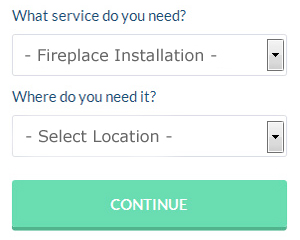Fireplace Installers: Reopening an old disused fireplace to install an open fire, a wood burner, or a gas fire is a fantastic way to add a homely feel and charm to any UK home. Chilly winter evenings can become immensely enjoyable as you unwind in front of your new fireplace, enveloped by the crackle of a burning fire. Moreover, if your fire is equipped with a back boiler, you can even reap the rewards of abundant hot water.
However, before you embark on dismantling the walls enclosing a boarded-over fireplace, there are several crucial factors to take into account to ensure the end result is a fireplace that is both safe and efficient. In the UK, any combustible appliance installed in residential homes must adhere to Part J of the Building Regulations, which specifically addresses hearths, flue linings, chimney breasts, and fireplaces. Additionally, if your home is listed or located in a conservation area, it may be necessary to obtain planning permission before commencing any work.
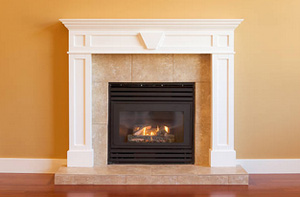
DIY OR PROFESSIONAL FIREPLACE INSTALLATION?
Restoring an existing fireplace can be a relatively straightforward task for a skilled DIY enthusiast. However, if the project involves any significant building work, there is a possibility of encountering structural issues that will require professional resolution. While it might be a stroke of luck to unveil a hidden gem when removing the covering from an old fireplace, often it will necessitate more than a simple cleanup and a visit from a chimney sweep to revive a roaring fire. In most cases, you are more likely to encounter a blocked flue and aged brickwork that demands structural alterations.
Considering the significant fire risk and potential health issues associated with an improperly installed or restored fireplace, it is highly recommended to rely on the expertise and knowledge of a professional fireplace fitter in the UK. Adequate airflow is a vital consideration for any room where a fireplace is to be installed, and it is a crucial requirement outlined in the Building Regulations (Part J). Inadequate ventilation can result in the accumulation of toxic carbon monoxide fumes from an inefficiently burning fire within a poorly ventilated area. To ensure safety and proper functioning, it is imperative to engage the services of a professional fireplace fitter who understands these important factors.
In certain cases, it may be essential to incorporate airflow vents in walls and floors to ensure a sufficient oxygen supply for the fireplace, enabling it to burn safely and efficiently at all times. Additionally, fireplace installers might need to install vents within unused chimney flues, as these flues can occasionally trap condensing air, leading to damp spots and staining on the chimney breast. By installing appropriate vents, such issues can be mitigated, allowing for proper airflow and preventing potential damage or discomfort caused by trapped moisture.
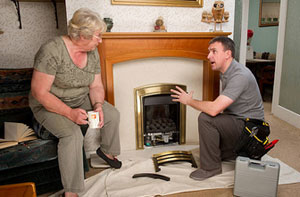
BEFORE WORK BEGINS
When reopening an old chimney for renovation, a significant amount of soot and debris can be discharged. A conscientious fireplace fitter in the UK will take precautionary measures by bringing dust sheets to cover your home furnishings and provide some protection. However, it is advisable, whenever feasible, to remove furniture and carpets from the area prior to commencing the work. If you are undertaking a comprehensive renovation of a house or room, it is recommended to open up and work on the fireplace before any decoration or plastering takes place. This preventive measure helps to prevent any potential discoloration or damage to previously completed refurbishment work. By prioritizing the fireplace renovation, you can safeguard the integrity of your existing refurbishments.
STRUCTURAL AND CONSTRUCTION WORK
Once the fireplace is opened up, it is crucial to assess which components are suitable for restoration and proceed with a thorough cleaning of the hearth and chimney. Engaging a professional chimney sweep should be one of the first tasks on your checklist. Their expertise ensures a comprehensive cleaning of your chimney and flue, while also allowing them to inspect the overall condition of the chimney and flue liner. If necessary, they can provide guidance on upgrading specific sections of the flue and chimney. This diligent approach ensures that your chimney is free from soot and debris, promoting optimal performance and reducing the risk of potential hazards. Relying on the knowledge and assistance of a skilled chimney sweep guarantees that your fireplace is prepared for safe and efficient operation.
If the installation of a new flue liner or reinforcement of the chimney is required, it is imperative to ensure compliance with the current Building Regulations. Such work should only be undertaken by a qualified craftsman who is well-versed in the relevant building regulations and proficient in good construction practices. Adhering to these regulations and practices guarantees the structural integrity and safety of the chimney. By engaging a qualified professional, you can have peace of mind knowing that the necessary measures are being taken to meet the required standards and ensure the longevity and reliability of your chimney.
In older buildings, it is possible to encounter original fireplaces that are too large for your specific needs. In such cases, the adaptation of the opening requires the installation of a supporting concrete lintel. Once the concrete lintel is securely in place, you can proceed with the installation, updating, and repair of the fireplace hearth. It is important to note that existing hearths, which may have been sunken into a floor void, must be raised above floor level to conform to the latest regulations. Fortunately, there are tailor-made options available to accommodate virtually any style and size of fireplace. Alternatively, you can choose from a range of commonly sized hearths that complement your desired decor. With the flexibility of these options, you can achieve both compliance with regulations and a fireplace design that aligns with your aesthetic preferences.
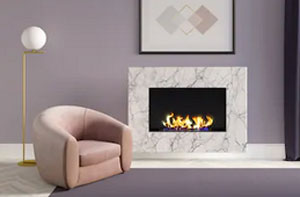
STYLES AND DESIGNS OF FIREPLACE
To explore the wide range of options available for different fireplace styles and designs, a visit to a fireplace showroom or an online browsing session would be worthwhile. It is important to note that not all fireplaces may be suitable for your existing flue and chimney. In this regard, it is wise to heed the advice and guidance provided by your sales and installation team, as they possess the expertise to assess your specific situation. Their insights can help you navigate the compatibility factors and make an informed decision that ensures a seamless fit between your chosen fireplace and the existing flue and chimney. By considering their recommendations, you can confidently select a fireplace that not only complements your aesthetic preferences but also aligns with the practical considerations of your unique installation requirements.
When determining the most suitable type and design of fireplace for your home, several factors come into play, including the age of your property and the desired theme for your room. For instance, an older home may lend itself well to a traditional inglenook fireplace, which can serve as a captivating backdrop for a classic cast iron wood-burning stove. This combination not only enhances the fireplace's inherent charm but also effectively reflects heat back into the room, creating a cosy and inviting atmosphere. By considering the unique characteristics and style of your home, you can select a fireplace that harmonizes with your overall vision and contributes to the desired aesthetic and ambiance of your space.
Even if your property doesn't have a pre-existing chimney, there is still the possibility of installing a wood-burning or multi-fuel stove. All you need is an exterior wall through which a flue can be routed from the back or top of the stove. This means that you can enjoy the warmth and ambiance of a "real" fire even without a chimney in place. The flexibility of flue routing allows for the installation of stoves in various locations within your home, providing you with the option to create a cosy and inviting atmosphere regardless of the chimney's absence. This opens up opportunities for homeowners to incorporate the charm and benefits of a stove into their living spaces, regardless of the structural limitations posed by the absence of a chimney.
GAS, MULTI-FUEL, WOOD, OPEN OR ELECTRIC FIREPLACE?
The charm and look of an open fire is hard to beat, but what alternatives are out there if this sort of fireplace isn't possible in your particular home?
Gas Fireplaces - Gas fireplaces offer convenience and control, as they can be easily ignited and regulated with a switch or remote control. They provide a clean and efficient source of heat and can be designed to mimic the appearance of a traditional open fire.
Electric Fireplaces - Electric fireplaces offer a hassle-free option as they require no venting or fuel. They are easy to install and often feature realistic flame effects, providing the ambiance of a fire without the need for a chimney or fuel supply.
Open Fireplaces - A roaring fire holds great appeal as a captivating centerpiece in any room of your home. It possesses the versatility to burn a wide range of solid fuels readily available for purchase. Gone are the days when open fires were associated with drafts, smoke, and inefficiency. Modern fireplaces have undergone significant advancements, transforming them into sleek and efficient additions that are pleasing to the eye.
Multi-Fuel Stoves - As their name suggests, multi-fuel stoves offer the versatility to be fueled by a range of options, including oil, gas, coal, or wood. They can become a distinctive centerpiece in any living room or kitchen throughout the UK. Opting for a multi-fuel stove, such as those offered by AGA, presents additional benefits beyond providing heat. These stoves allow for cooking, offering a convenient culinary option. Moreover, when connected to your central heating system, they can generate hot water for your household needs and efficiently distribute heat throughout your entire property. This multi-functionality makes multi-fuel stoves from AGA and similar brands a practical and efficient choice, offering not only warmth but also added convenience and functionality to enhance your living space.
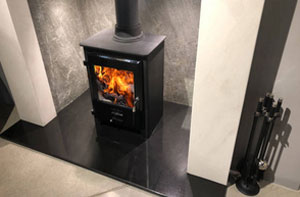
Wood Burning Stoves - In the UK, a diverse selection of wood-burning stoves is available, catering to various types of houses and even offering freestanding options. These stoves come in a range of styles to suit different aesthetic preferences. If you opt for a model with an integrated back boiler, you can benefit from supplementary heating capabilities. The back boiler transfers the heat from the fire to hot water, which can then be circulated to a radiator in a colder area of your property. This allows you to efficiently distribute heat and address cold spots, enhancing the overall warmth and comfort of your home.
Bioethanol fireplaces - Bioethanol fireplaces use a renewable and eco-friendly fuel source. They are versatile and portable, allowing you to place them in various locations within your home. However, it's important to note that these fireplaces do not emit as much heat as traditional fireplaces.
Chimney Cowl Installation
Chimney cowls play a crucial role in maintaining the efficiency and safety of a chimney system. These protective covers, typically made of metal or terracotta, are installed at the top of the chimney to provide various benefits.
One of the main purposes of chimney cowls is to improve draft and airflow within the chimney. They are designed to prevent downdrafts caused by wind or adverse weather conditions, which can hinder proper ventilation and lead to smoke or fume backflow into the room. By redirecting the airflow and creating a positive draft, chimney cowls help to ensure efficient combustion and prevent potential issues.
Another advantage of chimney cowls is the prevention of rainwater or debris from entering the chimney. Rainwater entering the flue can cause damage to the chimney structure and result in costly repairs. Cowls with rain caps or bird guards effectively prevent such unwanted entry, keeping the chimney dry and free from blockages caused by nests or leaves.
Chimney cowl installation is typically carried out by professional chimney sweeps or experienced installers. They assess the specific requirements of the chimney system and select the appropriate cowl design based on factors such as the type of fireplace or stove, prevailing weather conditions, and the presence of nearby trees or buildings. Proper installation ensures a secure fit and optimal functionality.
In conclusion, chimney cowl installation offers multiple benefits, including improved draft, protection against downdrafts, prevention of rainwater and debris entry, and overall chimney system efficiency and safety. Professional installation by experts in the field ensures proper fitting and maximizes the advantages provided by these essential chimney accessories. READ MORE HERE
Flue Linings
Flue linings, an integral component of chimney systems, serve several crucial functions. Primarily, they provide a safe and efficient conduit for the escape of combustion gases and smoke from fireplaces or stoves to the outside environment. This ensures that harmful gases, like carbon monoxide, do not seep into living spaces. Flue linings are made from various materials, including clay, ceramic, or metal, each suited to different types of heating systems and fuels.
The choice of material impacts the lining's durability, heat resistance, and compatibility with the fuel type used. For instance, stainless steel liners are often preferred for their resistance to corrosion and suitability for gas or oil appliances. Regular inspection and maintenance of flue linings are vital, as cracks or damages can lead to dangerous situations like chimney fires or gas leaks. Additionally, a well-maintained flue lining improves the efficiency of the heating system by ensuring a proper draft and facilitating better airflow, thus enhancing overall safety and performance.
Chimney Sweep UK
If your house in the UK has an open fire or a wood burner, it is important that you get your chimney swept regularly. Chimney sweeping and cleaning should typically be carried out at least once every year.
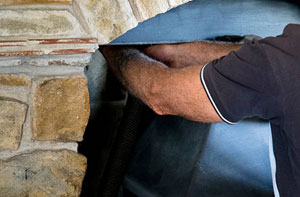
The best approach to get this done is to contact a specialist UK chimney sweep, who'll complete the work properly and without any mess. If there are any safety issues with your chimney, your chimney sweep will be able to identify them and advise you accordingly.
Failing to sweep your chimney in the UK could soon result in an accumulation of ash, soot and creosote which can lead to chimney fires. Another dangerous situation that you want to avoid at all costs is carbon monoxide fumes flowing back into your home, which can also be caused by a blocked or poorly maintained chimney.
In the unlikely event that any damages or accidents occur while you are having your chimney cleaned, ensure your chosen UK chimney sweep has public liability cover. You can GO HERE for the latest chimney sweeping prices in the UK.
Natural Stone Fireplaces
Why not bring the outdoors inside and build a spectacular looking natural stone fireplace? The exterior of your home might already have a stone boundary wall, facade, or some similar natural feature. This may be a method for coordinating those features internally.
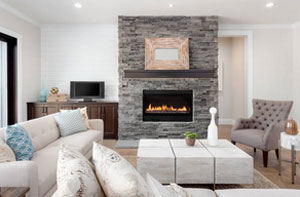
You can build a natural stone fireplace by using either a thin stone cladding or a full-depth stone, and the one that you opt for could be determined by your personal preference and how much money you're willing to spend. You will also need to choose what type of stone you prefer to use for your new fireplace, pick from: marble, sandstone, slate, quartz, granite or limestone.
How your new fireplace looks, will be affected by the sort of stone which is used, the style of building and the methodology used by the tradesman or stonemason who builds it. You should get some pictures prepared featuring the sort of design you are interested in, and before work begins, you can discuss them with your fireplace builder.
Many contemporary properties aren't really suited to the look of a natural stone fireplace, mainly because stone can be so striking, and dominate the appearance of a room. However, each individual homeowner has their own preferences and taste, so it's for them to decide.
How To Keep Your Open Fireplace And Lower Your Heating Bills
Along with worries about the environment, the classic fireplace is missing some of its charm, although it is still a favourite for many homeowners in the UK. There's nothing like feeling the warmth of a fireplace throughout a chilly winter evening. Having a fireplace has its advantages but there are a handful of drawbacks that could affect its usefulness. As power costs increase, you need to make sure that your fireplace is giving you heat efficiently. When a fire is burning, it may give warmth to those who are standing right in front of it, but it can actually pull warm air out of the room, making your heat source work even more. The hearth damper is supposed to prevent cold air from coming in to your home when you don't have a fire going in the fireplace. Unfortunately, dampers often have an inefficient seal, so cold air can get in, and warm air goes out.
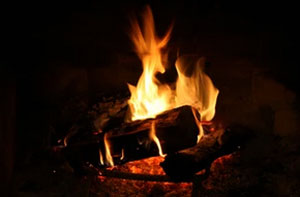
What the majority of people in the UK usually do not understand about their fireplace is that it doesn't necessarily do what they believe it is doing. Instead of managing the heating of a house naturally, a fireplace can essentially add 100s of pounds to the cost of your heating. However it's not all bad news because there are techniques for making your fireplace much more cost-efficient. There tend to be 4 simple steps that you can take to change your fireplace into a cost-effective heat resource. These definitely will make your present fireplace more efficient, and reduce your energy bills.
The initial thing that has to be done is to replace the current damper with a new top sealing damper. A top sealing damper is installed right at the top end of your chimney which also behaves the same as a storm door. The top sealing damper keeps the air in the house from leaking out and operates very well in both hot and cold weather. It doesn't take much time to install and you can get one online. Another thing that can be done is to fit a fire-back at the rear of your fireplace. A fire-back consists of cast iron and it is meant to shield the wall behind from fire damage, whilst making your fireplace look more elegant. The fire-back gets warmed up by the fire and sends the heat back into a room, hence boosting the fireplace's efficiency.
The next thing that could also help is a fireplace heater, which heats the room air that is being circulated through a chamber, and blows it back towards the room. These devices do not release any smoke and should be very efficient in keeping your house warm and toasty. Lastly, it is possible to fit glass doors which could be the most costly option. If you do a bit of research, you can find glass doors at a reasonable price and mount them on your own. These glass doors help to stop the heat from escaping and additionally it keeps pets and youngsters from getting burned.
Every one of these suggestions are simple to implement, and the required products can be easily found online. Take care of your fireplace and observe your energy bill tumble.
Natural Stone Fireplaces
Natural stone fireplaces are exquisite and timeless additions to homes, bringing a touch of elegance and sophistication to any interior. Crafted from a variety of stunning stone types, such as marble, limestone, granite, or slate, these fireplaces are renowned for their durability, unique textures, and captivating aesthetics.
Each natural stone fireplace is a work of art, showcasing the inherent beauty of the material. Whether you prefer a classic and traditional design or a more contemporary and minimalist style, there is a natural stone fireplace to suit every taste and interior decor.
Beyond their visual appeal, these fireplaces radiate warmth and provide a cozy focal point for gatherings, making them both functional and decorative. The versatility of natural stone allows for customization, enabling homeowners to choose the perfect hue and finish to complement their living space.
In essence, natural stone fireplaces are not just sources of heat but also statements of craftsmanship and refinement, creating an inviting atmosphere that transcends time and trends
Fireplace Inserts
Fireplace inserts represent a highly efficient solution for enhancing the warmth and ambience of a home. Designed to fit into the existing masonry of a traditional fireplace, these units are engineered to burn wood, gas, or pellets more cleanly and with greater efficiency than open fireplaces. By directing more heat into the room and less up the chimney, fireplace inserts significantly reduce energy waste and heating costs. They come in various styles and sizes, making it easy to find one that complements the aesthetic of any living space. Additionally, the installation of a fireplace insert can be a step towards greener living, as many models meet strict environmental standards by producing fewer emissions. Whether seeking to upgrade an old fireplace for better functionality or to add a focal point to a room, a fireplace insert offers a practical and attractive solution.
UK Fireplace Related Tasks

There are a wide range of tasks that can be carried out by your local UK fireplace company including contemporary fireplaces UK, fireplace restoration in the UK, flue liners, fireplace removal, fireplace hearths, cheap fireplace installation, chimney sweeping, fireplace replacement UK, fireplace repairs, Regency fireplaces UK, fireplace installation, fire grate conversions, wood burning fireplaces, outdoor fireplaces UK, oak beam fireplaces UK, brick fireplace installation, fireplaceprice quotes, wood burning stove installations in the UK, inset stoves UK, reclaimed fireplaces UK, designer fireplaces UK, tiled fireplaces UK, freestanding stoves, electric fireplaces, stone fireplaces UK, brick fireplaces, fake fireplaces, fireplaces UK, inglenook fireplace installation UK, limestone fireplace, stone fireplace installation, fireplace surrounds, modern fireplace installation, gas fireplace installation, fireplace fitting in the UK, and more. Listed are just a handful of the tasks that are carried out by those installing fireplaces. UK professionals will inform you of their entire range of services.
Fireplace Services UK
- UK Fireplace Repairs
- UK Cast Iron Fireplaces
- UK Wood Burning Fireplaces
- UK Stone Fireplaces
- UK Fireplace Mantels
- UK Fireplace Installation Services
- UK Fireplace Installers
- UK Fireplace Fitters
- UK Brick Fireplaces
- UK Fireplace Quotations
- UK Fireplace Surrounds
- UK Gas Fireplaces
- UK Fireplaces
- UK Electric Fireplaces
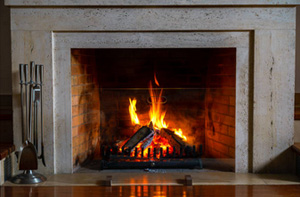 Fireplaces UK
Fireplaces UK Fireplace Fitter Near UK
Fireplace Fitter Near UK Fireplace Installation UK
Fireplace Installation UKMore UK fireplace installers: Chimney Restoration, Chimney Installation, Chimney Flashing Repair, Chimney Refurbishment, Chimney Restoration, Chimney Restoration, Chimney Renovation, Chimney Removal, Chimney Damp Proofing, Chimney Building, Chimney Renovation, Chimney Installation, Chimney Installation, Chimney Damp Proofing, Chimney Building, Chimney Damp Proofing, Chimney Building, Chimney Installation, Chimney Restoration, Chimney Removal, Chimney Building, Chimney Crown Repair, Chimney Repairs, Chimney Building, Chimney Renovation, Chimney Repair, Fireplace Replacement, Custom Fireplaces, Custom Fireplaces, Open Fireplaces, Stone Fireplaces, Fireplace Installations, Log Burner Installation, Stone Fireplaces, Fireplace Services, Custom Fireplaces, Fireplace Services, Fireplace Replacement, Brick Fireplaces, Fireplace Fitters, Bespoke Fireplaces, Brick Fireplaces, Fireplace Fitters, Open Fireplaces, Fireplace Installers, Fireplace Installations, Fireplaces, Gas Fireplaces, Fireplace Services, Fireplace Surrounds, Fireplaces, Gas Fireplaces, Fireplace Surrounds, Fireplaces, Custom Fireplaces, Open Fireplaces, Fireplace Replacement, Stone Fireplaces, Fireplace Installers, Electric Fireplaces, Cheap Fireplaces, Fireplaces, Fireplace Services, Fireplace Installations, Fireplaces, Fireplace Replacement, Log Burner Installation, Fireplace Installers, Bespoke Fireplaces, Gas Fireplaces, Gas Fireplaces, Custom Fireplaces, Fireplace Fitters, Open Fireplaces, Fireplace Installation, Custom Fireplaces.
Fireplace Fitters - Fireplaces - Fireplace Installation - Fireplaces Near Me - Fireplace Reopening - Open Fireplaces - Stone Fireplaces - Fireplace Installers Near Me



